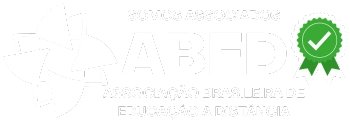
3.12. Major Telescopes and Astronomical Instruments: Telescope Maintenance and Care
Página 15
3.12. Major Telescopes and Astronomical Instruments: Telescope Maintenance and Care
One of the most essential instruments for astronomical observation is the telescope. Since its invention in the 17th century, the telescope has been the primary tool for amateur and professional astronomers to explore the cosmos. There are several types of telescopes, each with its specific characteristics and uses. Among the best known are the refracting telescope, the reflecting telescope and the catadioptric telescope.
The refracting telescope, also known as the Galileo telescope, uses lenses to focus light and magnify the image. It is the oldest type of telescope and is ideal for observing planets and the Moon. The reflecting telescope, on the other hand, uses mirrors to reflect light and magnify the image. This type of telescope is best suited for observing distant celestial objects such as galaxies and nebulae. The catadioptric telescope combines lenses and mirrors to create a magnified image and is ideal for observing a wide range of celestial objects.
In addition to telescopes, there are other important astronomical instruments, such as binoculars, astronomical cameras, spectrographs and radio telescopes. Binoculars are useful for observing constellations and other large celestial objects. Astronomical cameras allow you to capture high-quality images of celestial objects. Spectrographs are used to analyze starlight and determine its chemical composition. Radio telescopes, in turn, are used to detect radio waves from space.
Telescope Maintenance and Care
Maintaining and caring for your telescope is crucial to ensuring it continues to function properly and provide clear images of the night sky. Here are some tips on how to maintain and care for your telescope:
1. Cleaning: Regular cleaning of your telescope is essential to maintain image quality. Use a soft cloth and lens cleaner to clean your telescope's lenses and mirrors. Avoid using common cleaning products as they can damage lenses and mirrors. Also, never touch the lenses and mirrors with your fingers, as grease and dirt from your hands can damage them.
2. Storage:When you are not using your telescope, store it in a dry, dust-free location. If possible, store it in its original box or protective sleeve. This will help protect the telescope from damage and dirt.
3. Handling:Always handle your telescope with care. Avoid sudden movements and never force the moving parts of the telescope. When assembling and disassembling the telescope, follow the manufacturer's instructions to avoid damage.
4. Regular Maintenance:In addition to regular cleaning, it is important to carry out regular maintenance on your telescope. This includes checking that all parts are working properly and that there are no loose or damaged parts. If you encounter any problems, it is best to seek help from a professional.
In summary, good care and maintenance of your telescope can ensure that it continues to provide clear, detailed images of outer space for many years to come. Remember, astronomy is an activity of patience and precision, and a well-maintained telescope is an essential tool for this wonderful exploration of the universe.
Agora responda o exercício sobre o conteúdo:
What are the three types of telescopes mentioned in the text and their main characteristics?
Você acertou! Parabéns, agora siga para a próxima página
Você errou! Tente novamente.

Próxima página do Ebook Gratuito:












